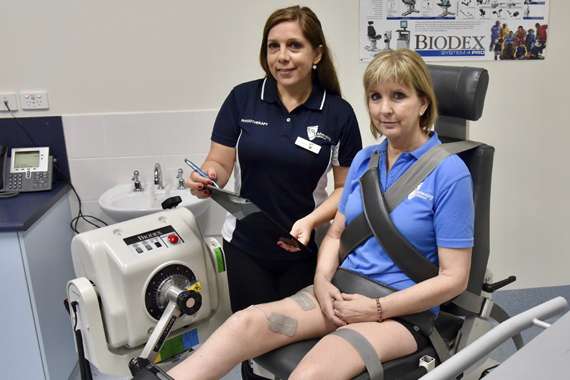New Treatment Could Help Victims of Spinal Cord Injuries
Description
It's vital that people with spinal cord injuries maintain their muscle strength and mass while waiting for effective solutions. This project aims to assess the benefits of high-intensity neuromuscular electrical stimulation for people with a spinal cord injury.
Partner
SpinalCure Australia
Impact
People with a spinal cord injury can have a better-quality life and better long-term prospects as they await a cure for their condition.
Dr Vanesa Bochkezanian, Dr Luke Heales, Dr Steven Obst, Sasha Job, Dr Lee Barber (The University of Queensland) and Dr Gabriel Trajano (Queensland University of Technology)
A car crash can happen in a split second, but the aftermath can seem an eternity for victims who suffer injury to their spinal cord and are confined to a wheelchair.
Spinal cord injury often interrupts connections between the brain and nerves in the legs, while injuries that are higher up the spine can also affect the arms. People who lose voluntary control of movement can develop problems with spasticity – a continual involuntary contraction of their muscles which can cause stiffness or tightness.
Medical research and new technologies are progressing, and everyone is hoping that effective treatments for spinal cord injuries will soon be a reality.
CQUniversity Neurological Physiotherapy researcher Dr Vanesa Bochkezanian says it's vital that people with spinal cord injuries maintain their muscle strength and mass while waiting for effective solutions.
"Without movement in their limbs, people who are sedentary may be at increased risk of cardiovascular disease, deep-vein thrombosis, pressure sores and interrupted sleep," she says.
"Meanwhile, there's a lot of research going on into treatments involving stem cells and even epidural stimulation … electrodes applied directly to the spinal cord are able to activate damaged nerves."
A few years ago, before arriving at CQUniversity, Dr Bochkezanian conducted a study into a form of strength training rarely used on patients with spinal cord injury. As part of her PhD degree at Edith Cowan University, she found that high-intensity neuromuscular electrical stimulation (NMES) showed benefits for five patients with chronic spinal cord injury.
NMES strength training – the use of electrical impulses to contract muscles – is usually performed at low intensities for spinal cord patients due to assumed tolerance levels.
"Our patients using the high-intensity stimulation not only tolerated the intervention but also demonstrated reduced spasticity, improved thigh muscle strength, improved cholesterol levels and trends towards a better quality of life," Dr Bochkezanian explains.
"During the study, we were able to objectively measure muscle size, and blood tests indicated changes in anti-inflammatory measures, but for one of our measures, we relied on subjective reports on levels of spasticity."
CQUniversity has matched a grant from SpinalCure Australia to purchase the latest NMES equipment for the project.
However, before embarking on a larger study of the benefits of NMES, Dr Bochkezanian plans a complementary study to assess whether the latest spasticity monitoring gear housed at CQUniversity Bundaberg can be considered an objective and reliable measure of muscle spasticity.
"Our initial study was a clear example of how the use of high-intensity muscle strength training-electrical stimulation in the legs of patients with spinal cord injury can help them become stronger, healthier and happier.
"We want to ensure we have more objective measures of success when we do our expanded study."
According to the Spinal Cord Injury Network, more than 10 000 people in Australia are living with a spinal cord injury – 80 per cent of them are male.
Dr Bochkezanian has come a long way from Argentina to live and research in Australia, and now her future study may also have potential applications for people with brain injuries, multiple sclerosis and stroke or anyone who might not be able to fully activate their muscles.
In that sense, her journey halfway around the globe may open up a world of potential to improve people's lives for the better.
Connect With CQUniversity
At CQUniversity we know the value of our connections locally and around the world. Our partnerships help us create opportunities, deliver solutions and change lives. From time to time, we share our Connections Count update where we share our highlights, including research impact stories like the ones below. Sign up to become one of our valued connections.

